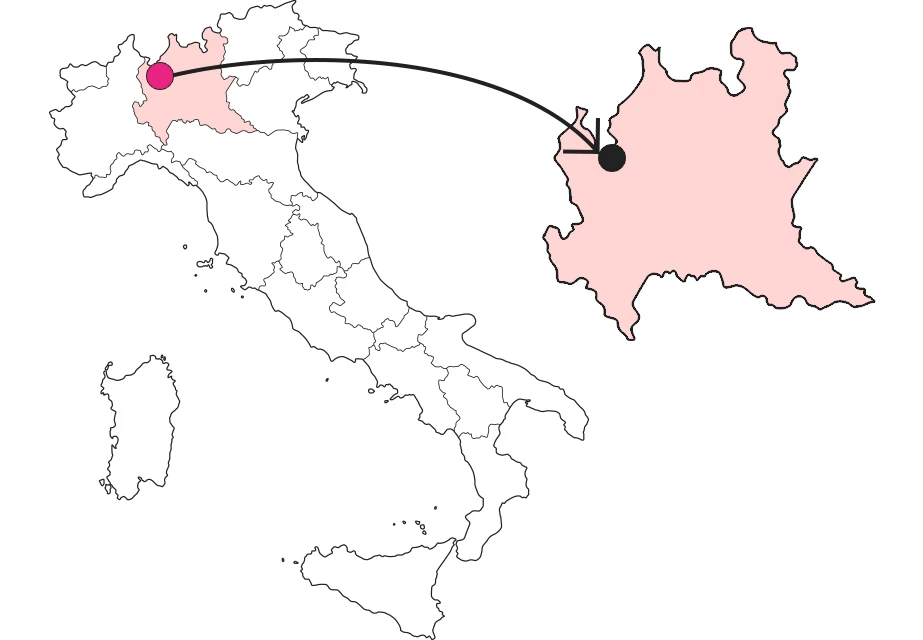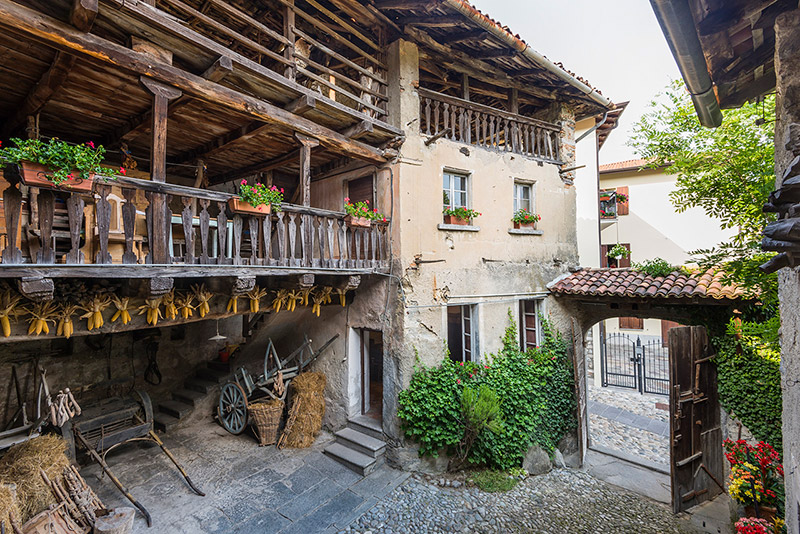







Segantini "under the open sky" in Caglio
Hunting for inspiration in the footsteps of the great painter



Where

A village with a rural soul
Caglio is a village in the province of Como that is the result of the skill of master stonemasons who carved and laid its stones with love and wisdom. Exploring narrow lanes and small squares where the typical wooden loggias of the old peasant houses face each other, one arrives at the heart of the village, at the Church of Saints Gervaso and Protaso with a large churchyard. The traces of an ancient art that distinguished skilled stone craftsmen for their mastery can be found in the local architecture, in the columns, steps, portals, arches, nevere and sacred shrines, part of the religious construct of the village.
 Typical peasant loggias made of wood
Typical peasant loggias made of woodOf stones and colors
But elements with bright colors and a more modern air carpet the views of Caglio here and there, creating for the visitor a kind of open-air museum. They are faithful reproductions of some of Segnatini's paintings about rural life, the countryside and faith. This all stems from the special union between the town of Caglio and Giovanni Segantini, an Italian Divisionist painter, dating back to the late 1800s. When Segantini, together with his wife, left Milan in search of profound inspiration, he landed in Pusiano and then in Eupilio, in the province of Como, but he felt the call of the Pre-Alps and the elevated mountains, and so it was that he settled in Caglio in 1885, finding among its views and countryside a new lifeblood.
 Reproduction of Giovanni Segantini's "Triptych: Life"
Reproduction of Giovanni Segantini's "Triptych: Life"Walking with Segantini
To mark the 150th anniversary of the master's birth, the village is dedicating a permanent exhibition to him that places large-scale reproductions of his masterpieces where they were born. This creates a very special, almost symbiotic effect , where the colors of the paintings embellish the stones of Caglio, and where the rural fabric makes his works vibrate with thickness. Here then that to accompany the visitor through the narrow streets of the village think works such as "After the Storm" with the heaviness of the sheep fleeces soaked in rain; the melancholy "Alla Stanga," painted in the meadows of Santa Valeria in Caglio in the early evening, the contours blurred by the arrival of darkness, the watery eyes of the herds; the intense naturalism that transpires from "The Two Mothers" in the accumulation of the human condition to the animal one.
Enter the Map of Italy's Undiscovered Wonders and find treasures where you least expect it... Inspire, Recommend, Share...
Contacts
Collections
It is part of the Land
The Map thanks:
In the Community
Enter the Map of Italy's Undiscovered Wonders and find treasures where you least expect it... Inspire, Recommend, Share...
Where

Contacts
Collections
It is part of the Land


